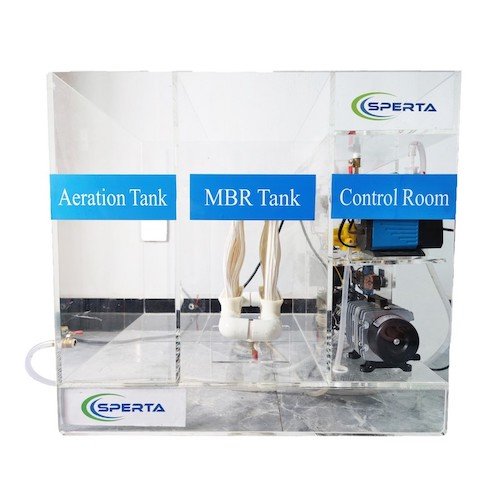Last Updated on July 24, 2022 by Kevin Chen
MBR membrane bioreactor is a new type of water treatment technology that combines membrane separation technology and activated sludge biotechnology. The MBR membrane module is placed in the membrane tank to replace the role of the secondary sedimentation tank in traditional water treatment. The treatment method is more efficient, and the effluent quality is better. In the operation of the entire filtration system, the design and function of the tank are also very important. This article will give you a brief introduction to the membrane bioreactor Tank.
What is the Membrane Bioreactor Tank?
A membrane bioreactor tank is simply a tank in which MBR membrane elements are placed, but in the actual membrane bioreactor system, it will be divided into several tanks, and we can also call them membrane tanks broadly. There are two ways to connect the MBR membrane module and the membrane bioreactor tank. One is that the membrane is directly placed in the aerobic tank, and the other is that the membrane is placed in a tank separately from the aerobic tank. And use a pump to deliver the water and sludge from the aerobic tank to the membrane tank.

What is the Function of the Membrane Bioreactor Tank?
MBR is a membrane bioreactor that goes through several tanks.
The first tank is the regulating tank, which mixes all the raw sewage to stabilize its composition.
The second tank is the anaerobic tank, which is mainly a tank for anaerobic bacteria to grow. A submersible mixer constantly mixes the sludge and effluent with anaerobic bacteria.
The third tank is an aerobic tank with internal oxygenation. Aerobic bacteria grow in a water environment with more oxygen, which can consume a large amount of COD. At the same time, all ammonia nitrogen is converted into nitrate. The MBR membrane is placed in the aerobic tank, and clear water is sucked into the clear water tank through negative pressure. Part of the water in the aerobic tank returns to the anaerobic tank directly, which can make the nitrate and ammonia nitrogen in the anaerobic tank converted into nitrogen gas released under the action of denitrifying bacteria.
When the activated sludge is in the aerobic tank, the sludge in the tank needs to be discharged when the sludge settling rate in the aerobic tank exceeds 50%. It can be pressed into sludge cake by filter press; it is better to choose a fully automatic filter press, which only needs to pump out the water in the aerobic tank and turn it into semi-dry sludge directly.
The sludge in the membrane tank activated sludge needs to be returned or discharged periodically. The function of the membrane is to trap large particles, not to provide a place for sludge to grow. The removal of COD in membrane tanks relies mainly on activated sludge. Aeration is performed in the membrane tank during operation so that the sludge is evenly distributed and rolls up and down without sinking and hanging on the membrane, ensuring proper operation of the membrane bioreactor tank.
Above is the knowledge about the membrane bioreactor tank. If you have any related questions, please don’t hesitate to contact SPERTA.












